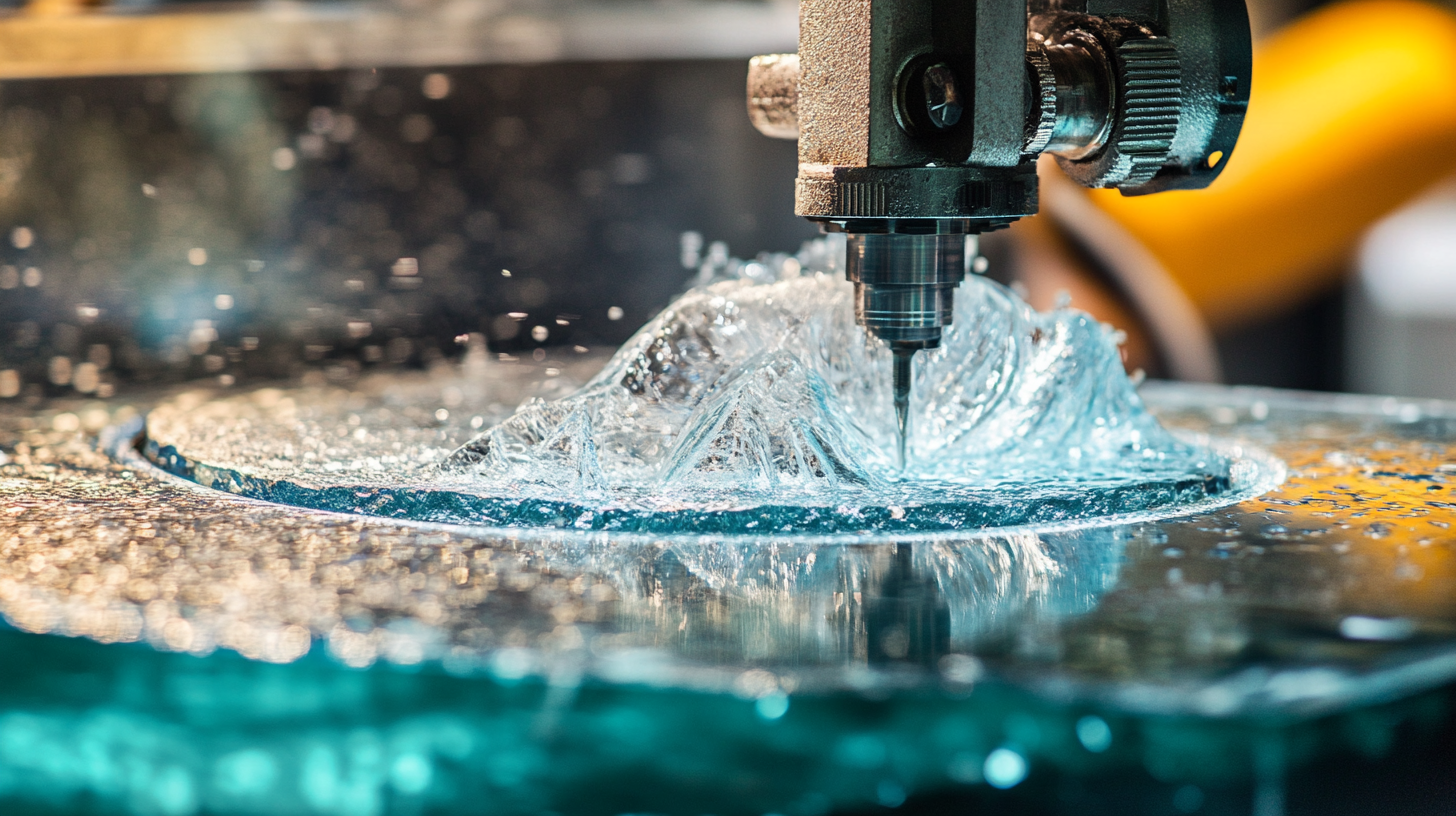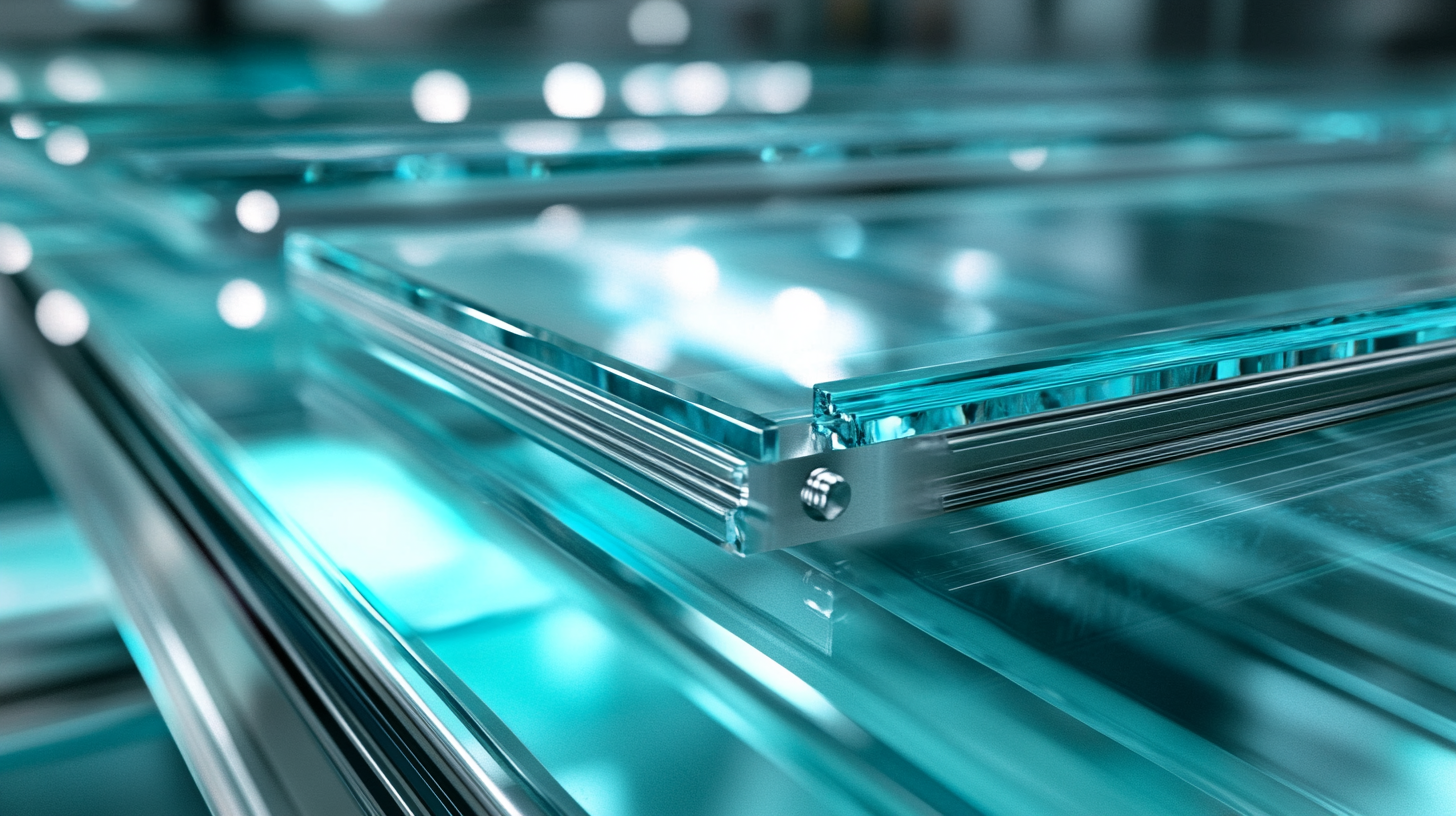Unlocking Production Efficiency with Innovations in Glass Shape Edging Machines
In the competitive landscape of the glass manufacturing industry, efficiency and precision are paramount. Recent studies underscore that the demand for glass processing machinery, particularly the Glass Shape Edging Machine, is expected to witness a compound annual growth rate (CAGR) of 4.9% from 2022 to 2027. This trend indicates a significant shift towards adopting advanced technologies that enhance operational efficiency and product quality. As manufacturers strive to meet increasing market demands, innovations in glass processing techniques are becoming essential.
The Glass Shape Edging Machine is at the forefront of this transformation, providing numerous advantages including improved accuracy, reduced waste, and faster production times. With the global glass market projected to reach USD 867.31 billion by 2024, the need for state-of-the-art edging solutions becomes even more critical. By leveraging new technologies such as automation and precision engineering, manufacturers can unlock unprecedented efficiency levels, streamline operations, and ultimately deliver higher quality products to their clients. Embracing these innovations is not merely a competitive advantage; it is becoming a necessity in today’s fast-paced glass industry.

Innovative Technologies Driving Efficiency in Glass Shape Edging Machines
In the rapidly evolving landscape of glass manufacturing, innovations in glass shape edging machines are transforming production efficiency. These advanced technologies are not just enhancing the speed of operations but also improving the precision and quality of the finished products. The integration of smart automation in edge processing equips manufacturers with the capability to ensure consistent cuts, reducing material waste and minimizing the manual labor required.
One of the most significant advancements in this field is the incorporation of computer numerical control (CNC) systems. These systems allow for intricate designs to be implemented effortlessly, enabling manufacturers to create complex shapes with a level of accuracy that was previously unattainable. Additionally, the use of high-speed diamond tools has significantly decreased the time taken for edging processes, allowing glass manufacturers to increase their output without compromising on quality.
Moreover, innovations such as real-time monitoring systems ensure that any deviations in production are promptly addressed. This proactive approach enhances overall operational efficiency by reducing downtime and ensuring all machinery operates at optimal levels. By embracing these cutting-edge technologies, manufacturers not only improve their competitive edge but also contribute to a more sustainable production cycle by reducing energy consumption and raw material waste.

Key Features of Modern Glass Shape Edging Machines
Modern glass shape edging machines have revolutionized the glass manufacturing industry, emphasizing precision and efficiency in glass finishing. One of the key features that make these machines indispensable is their ability to enhance edge strength, which is critical for the durability and usability of annealed glass. With edge strength reaching up to 80% of the surface strength, the quality of the edge finishing is vital for both aesthetic and functional purposes.
Additionally, advanced technologies incorporated into these machines allow for various glass shapes and sizes to be processed with remarkable accuracy. This flexibility not only expands design possibilities for manufacturers but also caters to a wide range of consumer preferences. By utilizing innovative edging machines, manufacturers can deliver high-quality glass products that meet stringent industry standards while increasing production efficiency.
The integration of automated features has also streamlined the production process. From automatic sanding to precision measurement, modern glass shape edging machines reduce labor costs and minimize human error, ensuring consistent results. As the industry continues to evolve, investing in these machines can significantly enhance both productivity and product quality, making them a pivotal element in the glass production landscape.

The Impact of Automation on Glass Production Processes
The integration of automation in glass production processes is heralding a new era of efficiency and innovation. As manufacturers embrace advanced technologies, such as artificial intelligence and robotics, the glass industry stands on the cusp of transformation. Automating shaping and edging machines not only streamlines workflows but also enhances precision, reducing waste and increasing output. This is particularly pertinent in an era where the demand for high-quality glass products continues to surge.
Recent advancements in AI and deep learning are proving to be game changers, allowing for real-time monitoring and adjustments in manufacturing processes. This means that issues can be detected and rectified promptly, minimizing downtime and enhancing overall productivity. Moreover, automation helps in standardizing production quality, which is paramount in competitive markets. With innovations being deployed across various sectors, including the automotive and construction industries, glass producers must prioritize integrating these technologies to stay relevant and efficient.
Collaborations between tech companies and manufacturing giants are further pushing the envelope, promoting smarter and safer production environments. Initiatives that focus on harnessing the Internet of Things (IoT) capabilities are paving the way for interconnected machinery that can communicate and optimize operations seamlessly. As the landscape of glass production evolves with these advancements, companies that adapt early to the rise of automation will undoubtedly lead the industry forward, ensuring they meet the ever-changing demands of the global market.

Case Studies: Successful Implementations of New Glass Edging Techniques
The integration of innovative glass edging techniques represents a significant leap forward in production efficiency, particularly in the context of advanced manufacturing processes. Case studies have demonstrated how these new methodologies not only streamline operations but also enhance the quality of finished products. By employing state-of-the-art glass shape edging machines, manufacturers can achieve precision and reduce wastage, which is critical in industries where material costs are high and accuracy is paramount.
In the realm of smart cities, the implications of such technologies extend beyond mere production. With the rise of the Internet of Medical Things (IoMT), the healthcare sector is harnessing similar innovations. Through the applications of AI and machine learning, healthcare solutions are becoming more interconnected, allowing for real-time monitoring and analytics that elevate patient care. The synergy between advanced manufacturing and healthcare technology underscores a transformative era, where the efficiency of production directly affects the quality of life and service delivery in urban settings.
Moreover, as industries navigate the challenges posed by digital transformation, the lessons learned from implementing new glass edging techniques can serve as a blueprint for other sectors, including financial services and retail. Adopting AI model optimization techniques will be essential for enhancing performance and making informed decisions in these critical areas. As we delve deeper into this technological revolution, the potential for cross-industry collaboration becomes increasingly evident, presenting opportunities to redefine efficiency and effectiveness across multiple domains.
Future Trends in Glass Edging Machine Designs and Technologies
As the glass manufacturing industry continues to evolve, the future of glass edging machines is set to witness significant transformations. Innovations in technology and design are not only improving the efficiency of production processes but also enhancing the quality and precision of glass shapes. One notable trend is the integration of automation and smart technologies. Fully automated glass edging machines are beginning to use AI-driven systems to analyze production data in real-time, allowing for proactive adjustments and minimizing material waste.
Another exciting development is the advent of modular machine designs. These flexible and adaptable systems allow manufacturers to customize their production lines according to specific project requirements, making them more versatile and responsive to market demands. Additionally, advancements in diamond tooling and coating technologies are enabling glass edging machines to achieve finer finishes at higher speeds. This not only enhances the aesthetic appeal of glass products but also reduces the time and cost associated with post-processing.
Moreover, sustainability is becoming a key consideration in the design of glass edging machines. Manufacturers are exploring eco-friendly materials and energy-efficient processes that reduce environmental impact. The push for sustainable production practices is likely to spur innovations that prioritize resource conservation while maintaining high-quality output. As the industry moves forward, staying abreast of these trends will be crucial for manufacturers aiming to unlock greater production efficiency and meet the demands of an ever-changing marketplace.

Home
About Us
Products
UPVC PVC Window Machine
Aluminum Window Machine
Glass Cutting Machine
Glass Edging Machine
Insulating Glass Machine
Glass lifting machine
Glass Washing Machine
Glass Laminating Machine
Glass Sandblasting Machine
Glass Drilling Machine
CNC Glass Working Center
CNC Non-Metal Cutting Machine
The Other Glass Machinery
Application
Download
News
Contact Us




